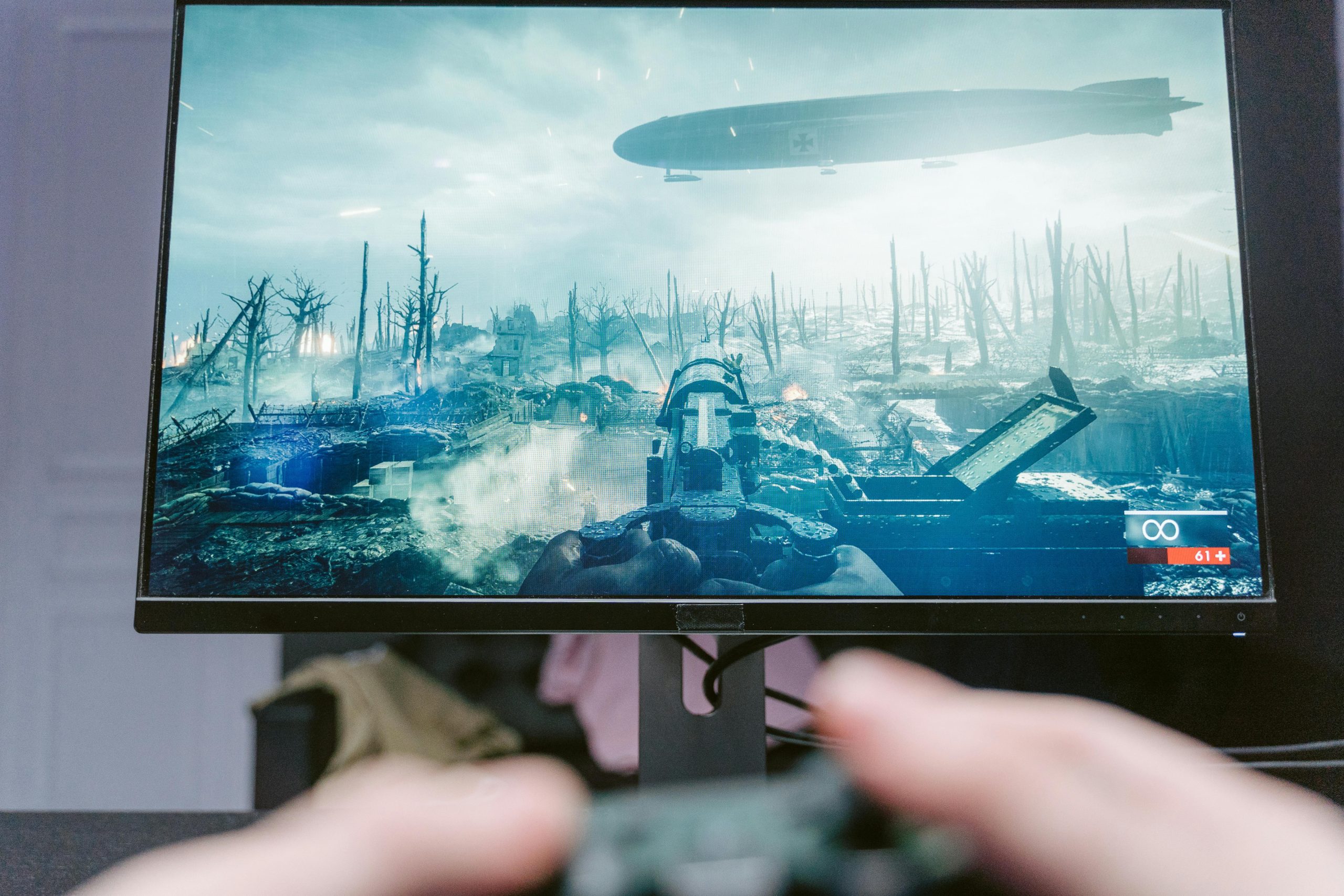A gaming monitor is an essential component for any serious gamer. It determines how clear, smooth, and detailed the visuals of your game will be. With the rapid advancement in display technology, choosing the right gaming monitor can significantly impact your overall gaming experience. In this guide, we’ll explore the key features, types, and considerations to help you select the perfect monitor for your gaming setup.
1. What is a Gaming Monitor?
A gaming monitor is designed to meet the specific needs of gamers by offering superior image quality, fast refresh rates, and responsive performance. Unlike regular monitors, gaming monitors are equipped with features such as higher refresh rates, lower response times, and better color accuracy to deliver a smooth and responsive gaming experience.
2. Key Features to Look for in a Gaming Monitor
When choosing a gaming monitor, there are several important features to consider:
- Resolution: Resolution refers to the number of pixels on the screen and directly affects the clarity and detail of the image. Common gaming monitor resolutions include:
- 1080p (Full HD): A solid option for budget-friendly gaming setups. It’s easy on your system and offers decent image quality.
- 1440p (Quad HD): Offers a significant upgrade in image sharpness compared to 1080p, providing more detail and depth.
- 4K: The highest resolution for gaming monitors, offering exceptional image clarity and detail. It requires a more powerful graphics card to run games at this resolution.
- Refresh Rate: Refresh rate determines how many times per second the image on the screen is updated. Higher refresh rates lead to smoother motion, which is especially important in fast-paced games. Common refresh rates are:
- 60Hz: Standard for regular use and casual gaming.
- 120Hz or 144Hz: Ideal for competitive gaming, offering a much smoother experience.
- 240Hz or higher: For serious gamers who need the smoothest performance, especially in esports.
- Response Time: This is the time it takes for a pixel to change from one color to another, usually measured in milliseconds (ms). A lower response time results in less motion blur and ghosting, which is important for fast-moving visuals. Most gaming monitors have a response time of 1ms to 5ms.
- Panel Type: The panel type affects both the visual quality and performance of the monitor:
- IPS (In-Plane Switching): Known for better color accuracy and wider viewing angles, making it a great choice for games where color and detail are important.
- TN (Twisted Nematic): Typically offers faster response times and refresh rates but sacrifices color accuracy and viewing angles. Ideal for competitive gamers who prioritize performance over visual quality.
- VA (Vertical Alignment): Offers a good balance between color accuracy, contrast, and response time, making it suitable for a variety of gaming genres.
- G-Sync or FreeSync: These technologies are designed to reduce screen tearing and stuttering by synchronizing the monitor’s refresh rate with the frame rate of your graphics card. G-Sync is designed for Nvidia GPUs, while FreeSync is designed for AMD GPUs. Both provide a smoother gaming experience by eliminating visual artifacts.
- Connectivity: A good gaming monitor should offer multiple connectivity options, including HDMI, DisplayPort, and USB ports. Make sure your monitor has the necessary ports to connect to your gaming console, PC, or other devices.
- Size: The size of the gaming monitor should suit your personal preference and gaming setup. Popular sizes for gaming monitors are between 24 and 32 inches. Larger screens offer a more expansive view, but they may require more space and can be harder to handle for fast-paced gaming.
- Curved vs. Flat: Curved monitors offer a more natural viewing experience by curving the edges of the screen to match the natural curve of your eyes. This can help reduce distortion and enhance your field of view. Flat monitors are more traditional and provide a straight-on view of the screen, which some gamers prefer for a more straightforward visual experience.
3. Types of Gaming Monitors
There are various types of gaming monitors to suit different types of gamers:
- Standard Gaming Monitors: These monitors offer good performance and a reasonable price. They usually have refresh rates of 60Hz to 144Hz and come in sizes ranging from 24 to 27 inches. Standard monitors are great for casual gamers and those who don’t require extreme performance.
- Ultra-Wide Monitors: Ultra-wide monitors have an aspect ratio of 21:9 or 32:9, providing a wider field of view and more screen real estate. These are ideal for gamers who enjoy open-world games or those who also want to multitask while gaming. They offer a more cinematic experience but may require a more powerful system to run smoothly.
- 4K Gaming Monitors: These monitors have a resolution of 3840×2160 pixels, providing exceptional detail and clarity. 4K monitors are perfect for gamers who want to enjoy the highest level of visual fidelity. However, to take full advantage of a 4K monitor, you’ll need a powerful GPU capable of handling the extra workload.
- Portable Gaming Monitors: These lightweight and compact monitors are ideal for gamers who need a second screen on the go. Portable gaming monitors often have smaller screen sizes (13 to 17 inches) and are perfect for gaming on laptops or as secondary monitors.
4. How to Choose the Right Gaming Monitor
Here are a few tips for selecting the right gaming monitor:
- Match Your System’s Power: Before choosing a monitor, make sure your graphics card or gaming system is capable of supporting the monitor’s resolution and refresh rate. For example, a 4K monitor with a high refresh rate requires a more powerful GPU than a 1080p monitor.
- Prioritize What Matters Most: Think about what matters most to you in a gaming monitor. If you’re a competitive gamer, a high refresh rate and low response time might be your top priorities. If you’re more focused on visuals, a high resolution and color accuracy will be more important.
- Consider Your Budget: Gaming monitors come in a wide range of prices, so make sure to choose one that fits your budget while offering the features you need. Higher-end monitors may offer more advanced features but can be much more expensive.
- Space and Setup: Make sure you have enough space for your monitor, especially if you’re considering a larger or ultra-wide model. Check the dimensions and consider how it will fit into your gaming area.
5. Popular Gaming Monitors to Consider
Here are some of the best gaming monitors currently available:
- ASUS ROG Swift PG259QN: A 24.5-inch 1080p monitor with a 360Hz refresh rate and a 1ms response time, perfect for fast-paced competitive gaming.
- Samsung Odyssey G7: A 27-inch curved monitor with a 240Hz refresh rate, 1ms response time, and a 1440p resolution, providing excellent color accuracy and smooth performance.
- LG UltraGear 27GN950-B: A 27-inch 4K monitor with a 144Hz refresh rate and G-Sync compatibility, offering stunning visuals and fluid gameplay for both casual and competitive gamers.
- BenQ ZOWIE XL2546K: A 24.5-inch monitor with a 240Hz refresh rate, 1ms response time, and DyAc+ technology, designed for esports players who demand the best performance.
- Acer Predator X34: A 34-inch curved ultra-wide monitor with a 144Hz refresh rate and 1440p resolution, ideal for gamers who want to experience expansive visuals and high performance.
6. Conclusion
A gaming monitor plays a crucial role in determining how you experience your games. By understanding the key features and knowing what to look for, you can select a monitor that will not only enhance your gameplay but also provide the visual quality and performance you need. Whether you’re a casual gamer or a competitive player, there’s a monitor that fits your needs perfectly.

